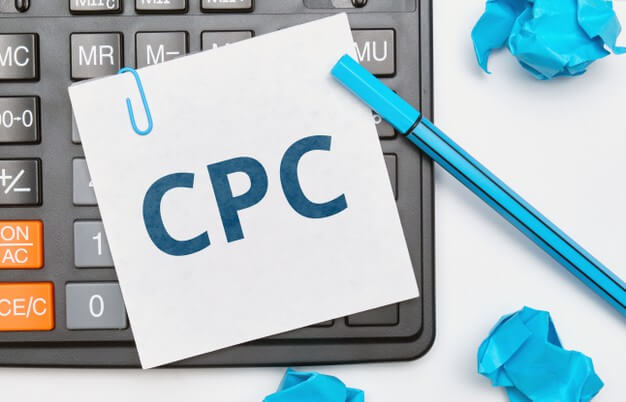The long game of SEO vs the short game of SEM and how both can grow sales
Quite often while working in the industry of digital advertising, a client raises the question on which is better; investing in the long-term growth of Search Engine Optimization (SEO), or investing in instant Paid traffic with Search Engine Marketing (SEM). Usually, the majority of clients want to see the quickest Return on Investment, and understandably why. The idea of paid traffic to the website presents itself as the quickest, most effective solution for establishing a Return On Investment (ROI). Unfortunately, buying clicks to your website right away is not always the best choice.
We’re going to explore the benefits of SEO vs SEM, look at the pros and cons of each and hopefully help make decisions on the best approach. Let’s get started.
SEO and SEM meaning – If you’re familiar with SEO & SEM, skip this part.
First and foremost, it’s probably best to clear up the main difference between SEO and SEM. The key difference between SEO and SEM is that with SEM you are paying for clicks to your website. On the other hand, with SEO, the focus is on developing organic clicks that don’t cost money every time someone clicks thru to your website from a Search Engine Results Page (SERP).
SEO stands for Search Engine Optimization. It is the act of optimizing a website to be found on search engines. For a brief explanation, see our article What is SEO? Your go-to Guide.
SEM stands for Search Engine Marketing. Now, briefly the two might appear to be the same thing. SEM refers to a form of paid advertising on search engines such as Google and involves purchasing advertising spots on their Search Engine Results Pages (SERP) for various keywords people search.
On the other hand, SEO is optimizing a website to be indexed on SERP pages for the long-term. This means you will be found in Google search on a SERP any time someone searches for the keywords related to the page for your article. There is no cost associated with this.

True SEO vs SEM
The immediate response for some clients I have worked with in the past is, they would prefer to pay for the clicks for the quickest results. This makes sense at first glance; however, it is not always the best solution. There are a couple of key points to consider when launching any paid advertising campaign. The quality of the site, the page load time, is there a clear journey on the website that will result in a conversion, and user experience, are just a few points to consider.
Another point to consider is, the industry that you’re in. Not always is it a wise decision to start paying for clicks if your business is a market that primarily makes most of its sales in the offline world. It might make sense from a branding standpoint, and many clients consider this, however working with a digital marketing agency that presents an overall solution is the best approach by far.
Cost Per Click
One of the biggest points to consider with SEM is Cost Per Click, otherwise known as CPC. Think of it like this. Cost Per Click is the price you will pay for a click to your website. With SEM, advertisers target related keywords to their site, and when someone searches for that keyword, their ad will appear above the organic search results on the search engine results page. With some industries, those prices can average from a few dollars to several dollars a click, and in some cases, to well over 100.00 dollars per click. If you are in a competitive industry, CPC can dramatically increase when you start to compete for various terms with other companies in your industry.
For more information on what CPC is, see what Google has to say with their Cost Per Click: Definition.

SEM Auction and how CPC is affected
At the basic level, SEM works by creating a bid marketplace for keywords that users search for. Google, Microsoft, and other search engines use a bidding platform that allow advertisers to bid on certain keywords. Because it is an auction for keywords, how much you are willing to pay for a click is factored into whether your ad will appear or not. Whoever bids the highest wins the chance to have their ad viewed on the search engine, which could result in a click, at which point the advertiser is charged.
Many advertisers will raise their bids to remain competitive, and in turn the Cost Per Click goes up. A typical ad campaign to generate 100 new clicks per month to your website with ten dollar bids could easily add up to 1000.00 monthly. This might be worthwhile to you if your focus is branding, however if you are looking for lead generation, or trying to generate sales for a product or service, this could get costly without website optimization. This may not be an issue for a website that has been established long-term on Google search, so really it is a case by case basis.
Higher cost per click is one issue associated with an SEM campaign. If you are not familiar with the inner workings of how Google Ads or Microsoft Ads work, the cost can add up quick. This alone is one advantage of working with a digital advertising company. Typically, a good campaign manager can bring cost per click down to a reasonable number.
Realistically, to have an effective SEM paid ad campaign, it is not unreasonable to budget 5K to 10K a month. Because there is a period of optimization time internally in the ad platform for your campaign, be prepared to not see any return on your investment for at least three months. In the end, optimizing for paid traffic takes time.
SEO – True Website Optimization
One of the most important factors to consider when doing paid advertising is, how optimized is your website? Do you have a website that has been around for a long time? How is your mobile experience, and what landing pages do you have setup? What is the process for a client to contact you and how do you plan on tracking that? Is your site currently indexed on Google Search? These are all important considerations when committing to a paid traffic solution. Paid traffic is effective with certain industries and when managed correctly, however cost can add up quick when the site is not prepared properly to receive traffic.
My suggestion is, spend time and energy on optimizing your website for SEO. Then learn how to manage an effective paid advertising campaign. Google offers several courses on how to manage Google Ads campaigns, and they are worth exploring, even if you plan on outsourcing your paid ads management to an agency.
Key Difference between SEO and SEM
All things considered, taking into account the key difference between SEO and SEM is important when deciding to do a paid advertising campaign. While SEM is essentially paying for web traffic to come to your website, SEO is optimizing your website to be found whenever someone searches for keywords related to your industry. This type of traffic does not cost anything and is always available in Search. You don’t have to worry about competitive bids, or running out of advertising budget, it is always indexed provided your site is maintained properly.
If your website is not optimized to be found on Google Search, you may want to consider holding off on doing any SEM campaigns until you have established some organic rank on Google. To summarize, launching a paid advertising campaign with a brand new site that hasn’t been optimized to receive traffic, is putting the cart before the horse. Build a powerhouse site that converts first, and then do paid ads. Overall, when comparing SEO vs SEM, they are both strategies that serve best when used together.
Benefits of SEO
If we explore the long-term benefits of SEO, we can see that sites that are optimized for SEO have established themselves to be ranked higher inside of Google Search, resulting in long term positive traffic patterns for their site. A site that is optimized for SEO has the potential to generate hundreds if not thousands of organic monthly clicks to their website, where without optimization, the site would not have been found. Had a website owner opted to start with paid traffic first, yes, they could receive traffic, however once those paid advertising campaigns stop, so do the clicks.
Generally, having a site optimized for SEO is the best investment of your time and money in the first year of developing a web presence. This takes time and patience, and while it is not always guaranteed for immediate results, your search engine indexed position will improve if you are doing the right things in an ethical and above-board way.
Structured Data
First, if you are not familiar with structured data and how this affects SEO, while outside the scope of this article, it is worth mentioning. For a full understanding of structured data, check out Google’s article, Understand how structured data works.
Structured data in the simplest form, is data organized in a way that search spiders can understand. As bots and spiders crawl the web looking at various pages in various formats, it is not always clear to a nonhuman eye what the webpage is about. When having structured data in place using schema.org markup, the search spiders can comprehend what the page is about. A complete structured data plan is part of a full SEO plan, and when doing paid traffic, at least with Google Merchant Centre, there are recommendations for using JSON-LD separate from your HTML markup for best results, implying structured data is in place before hand.
Having a solid structured data plan is a wise idea in either Search Engine Optimization or Search Engine Marketing and considering most SEO professionals incorporate structured data into their optimization plan, in the case of SEO vs SEM, having a website optimized first for SEO first would be the clear winner.
So, which is better, SEO or SEM?
Both methods are relatively worthwhile to test and explore, however having a sound marketing strategy is the best starting point. Combining best practices of both search optimization and paid search marketing is a wise long-term goal. My recommendation is to start with SEO, and after six months to a year, incorporate SEM. Optimize your existing site, and begin to develop and release new content. Measure and test the traffic to your site, and then optimize your website to perform better.
Once you are in the routine of building up your site, and optimizing for performance, you will be in a routine of success; then add paid advertising efforts. Paid SEM traffic sources such as Google Ads or Facebook Advertising will generally provide results with a site that is built to perform.
Pro Tip – Collecting data and measuring results
Collecting data about your website and what people are doing on your site is one of the most productive activities you can be doing. People interact with websites in different ways. They engage in ways that lead them to make either negative or positive assumptions about the product or service on the website. Once they make that decision, they act.
Collecting and measuring website engagement is one of the most exciting features of digital advertising. In traditional marketing, such as radio, TV and print ads, this experience cannot be measured. Take for example a billboard. They are everywhere, so clearly, they work to a certain degree. When I drive down Interstate 75 in the United States, I see hundreds of billboards, and in some cases I make the decision to stop at one of the advertised locations. There is nothing to indicate that I “converted” from one particular billboard, however the fact remains: billboards work.
Digital ads work. With digital advertising, we have the ability, when proper measurement is in place, to determine how the conversion came to be, the users’ journey, and where they came from. Add to this, we can also see what is not converting. For this reason, we can make better use of our advertising dollars. With Digital ads and a carefully planned measurement plan, this is possible. Measuring web traffic is critical; when we measure what is happening, we can tell the story of the site.
There are many tools to do this. There is Google Analytics, Google Tag Manager, and Google Optimize to name a few. With Google Analytics, you can visualize your data, Tag Manager helps you further collect data inside of Google Analytics and Google Optimize gives you the ability to split test traffic to give your user an experience that is tailored for conversion.
Conclusion for SEO vs SEM
In the end, both SEO and SEM are different sides of the same coin and are both excellent tools for getting traffic to your site. It is ultimately your website and where your site is at that determines who wins the battle of SEO vs SEM. If you’re not sure, hire an expert for analysis and if you are sure, than you know what to do.
In summary, think of SEO as the foundation to build upon. Incorporate great content that people will link to, and make sure your site is fast. Setup up a solid measurement plan, and when you have a site that is built to perform, begin to test traffic with paid sources. Scaling traffic with SEM digital paid advertising can be exciting and when you have a website that is optimized to convert, satisfaction is guaranteed.








